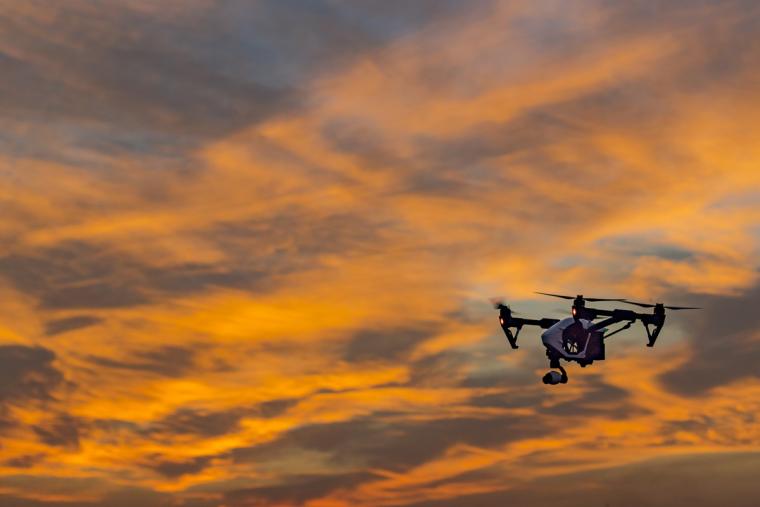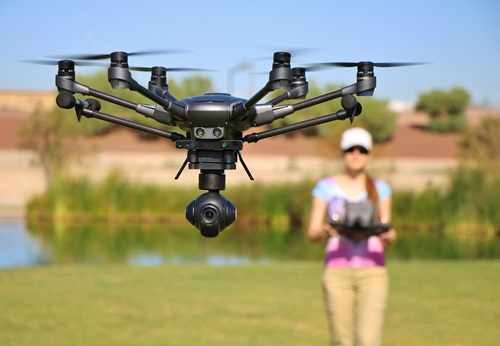
Photo © Jarmandigital | Dreamstime.com
Spurred by concerns over privacy as well as personal safety, park systems are beginning to outlaw the use of drones. It’s an issue that taking flight as UAVs come down in price.
In Georgia, Rough Draft Atlanta reported that the Brookhaven Parks and Recreation department has issued a policy restricting the use of recreational drones in public parks and sports fields owned by the city. Parks and Recreation Director Michael King presented a list of recommendations banning possession or operation of drones “at any time, anywhere within, upon, or above any park property” unless permitted by the city.
Brookhaven is in good company. The National Park Service has implemented a general ban on the launching, landing, or operating of drones within most National Parks. And the organization has good reason; according to NPS, “In some cases, [drone] use has resulted in noise and nuisance complaints from park visitors, park visitor safety concerns, and one documented incident in which park wildlife were harassed. Small drones have crashed in geysers in Yellowstone National Park, attempted to land on the features of Mount Rushmore National Memorial, been lost over the edge of the Grand Canyon, and been stopped from flying in Prohibited Airspace over the Mall in Washington DC.”
State- and city-owned parks, as well as other municipal facilities have specific rules; some are shown on this map but in general, the most updated rules can be obtained in each area.
The sports industry in particular has been plagued by problems relating to drones. (In fact, the problem has gotten so serious that an entire economy has sprung up to handle drone countermeasures.) The most recent high-profile UAV-related incident took place during the 2024 Olympics in Paris when Canadian soccer officials admitted to FIFA that using drones to spy on opponents was a matter of routine for the men’s national team as well as the women’s team, both of which were sanctioned for using drones. (Count on this issue to be addressed in advance of the 2026 World Cup, to be hosted in Canada, the USA and Mexico.)
But the problem has been going on for years. In 2017, a man operating a drone dropped anti-media leaflets on NFL crowds at both Levi’s Stadium in San Francisco and the Oakland Coliseum. He was arrested for violating airspace laws.
As The San Francisco Chronicle reported: “It is illegal to fly a drone within five miles of an airport without authorization. If flown for hobby purposes, a drone operator must notify the airport prior to flight, and if it’s for commercial purposes the pilot must have an FAA license and get authorization. Both Levi’s Stadium and the Coliseum are within five miles of airports.”
Drones at stadiums are tough to stop, though. “It’s scary for all of us,” Lou Marciani, director of the National Center for Spectator Sports Safety and Security, told the Chicago Tribune in 2015. “A crash, even without a payload, has the potential to injure several people. And if they carry a payload, it could be anything from a weapon to anthrax to something worse than that.”
 And back in 2015, an unauthorized UAV flew into the US Open and crashed in the stands, disrupting a game and startling spectators. The event now has a “no drone zone” policy. Pro sports have seen ongoing problems; in February of 2024, a man was arrested after flying a drone over the M&T Bank Stadium during the AFC Championship game. A Texas man was arrested and charged by officials after flying a drone over a Major League Playoff game in Texas.
And back in 2015, an unauthorized UAV flew into the US Open and crashed in the stands, disrupting a game and startling spectators. The event now has a “no drone zone” policy. Pro sports have seen ongoing problems; in February of 2024, a man was arrested after flying a drone over the M&T Bank Stadium during the AFC Championship game. A Texas man was arrested and charged by officials after flying a drone over a Major League Playoff game in Texas.
Even at the youth level, parents and athletes feel harassed by UAVs who buzz over their space. Of course, there’s always this clip of a youth soccer player knocking a drone out of the sky with a ball. Nice kick, kid!
Drones absolutely have their uses. They have been effective at spotting sharks in open water, as well as spotting swimmers in distress – and dropping floating devices to them.
But with drones dropping in price (including being available in big-box stores) and ease of operation, many who purchase the devices are headed outdoors to practice their skills in open areas. Currently, many operators, finding themselves stymied at parks, will go to another open area – cemeteries. Count on hearing more about that as well.

